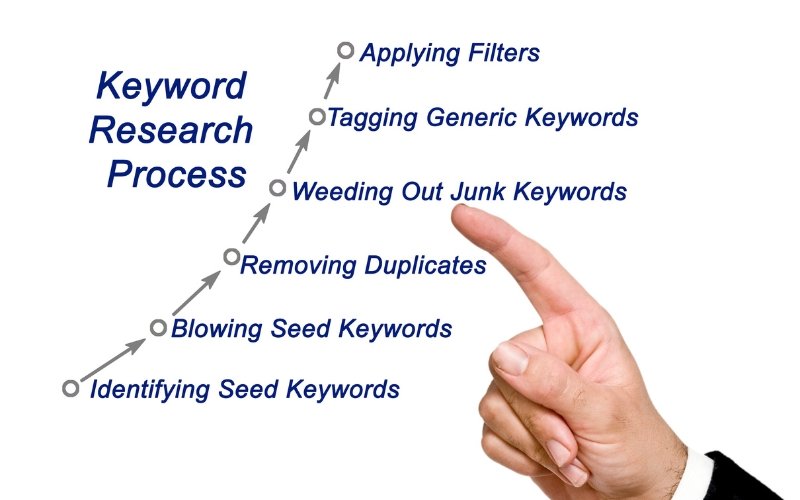In the world of search engine optimization (SEO), understanding the types of keywords you should target is essential to building an effective strategy. Keywords are the words and phrases users type into search engines to find information, products, or services. Two of the most common keyword types are short-tail keywords and long-tail keywords. Both play crucial roles in SEO, but they serve different purposes and offer distinct advantages. In this article, we will explore the differences between short-tail and long-tail keywords, how they impact your SEO strategy, and how to use them effectively.
What Are Short-Tail Keywords?

Short-tail keywords, also referred to as head terms or broad keywords, are simple phrases consisting of one or two words. Examples include “shoes,” “digital marketing,” or “SEO services.” These types of keywords are often broad and generic, attracting high search volumes due to their widespread usage. Many internet users search for these terms, making them highly competitive in the SEO landscape.
For instance, the keyword “laptops” could generate thousands or even millions of searches monthly. However, the intent behind such searches is often ambiguous. A person searching for “laptops” might be looking for buying guides, product reviews, comparisons, or retail locations. This lack of specificity can make targeting these types of keywords challenging, as it is harder to align content with user intent effectively.
Benefits and Drawbacks of Short-Tail Keywords
Benefits
- High Search Volume
Short-tail keywords generally have massive search volumes because they are generic and widely used. Targeting these types of keywords can potentially drive substantial traffic to your website. If you manage to rank for a short-tail keyword, the visibility can be a game-changer for your site’s performance. - Increased Brand Awareness
Focusing on short-tail keywords can boost your brand’s visibility and recognition. Because of the sheer popularity of these types of keywords, more users will encounter your content, even if they don’t convert immediately. This helps establish your presence in your industry over time.
Drawbacks
- High Competition
Short-tail keywords often face fierce competition, as they are dominated by authoritative websites with strong SEO strategies. Competing for these types of keywords can be particularly difficult for smaller or newer websites, as established domains typically rank higher in search engine results. - Low Conversion Rates
While short-tail keywords attract a lot of traffic, the users searching for these terms are often in the early stages of their buying journey. This means they might not yet be ready to take action, such as making a purchase or signing up for a service. As a result, conversion rates for these types of keywords tend to be lower compared to more specific, intent-driven keywords.
What Are Long-Tail Keywords?
Long-tail keywords are more specific search terms that typically consist of three or more words. Examples include “best running shoes for flat feet,” “affordable SEO services for small businesses,” or “how to bake gluten-free bread.” Long-tail keywords have lower search volumes than short-tail keywords, but they are more targeted and less competitive.
Because long-tail keywords are more specific, they often reflect the intent of the searcher more clearly. For example, someone searching for “best running shoes for flat feet” is likely further along in the buying process than someone who simply searches for “shoes.” This higher level of specificity often leads to higher conversion rates for long-tail keywords.
Benefits and Drawbacks of Long-Tail Keywords

Benefits:
- Lower Competition: Long-tail keywords are less competitive because they are more specific and less frequently searched. This means it’s easier to rank for these terms, especially for smaller or newer websites.
- Higher Conversion Rates: Long-tail keywords are typically used by searchers who are closer to making a purchase or taking action. As a result, they tend to convert at a higher rate than short-tail keywords.
- More Targeted Traffic: Because long-tail keywords are more specific, the traffic they generate is more relevant. These visitors are more likely to engage with your content and complete a desired action, such as making a purchase or signing up for a newsletter.
Drawbacks:
- Lower Search Volume: Long-tail keywords usually have lower search volumes compared to short-tail keywords. This means that while the traffic is more targeted, the overall number of visitors from these keywords will be lower.
- More Content Required: To effectively target multiple long-tail keywords, you may need to create more content to address each specific search query. This can be time-consuming and require a greater investment in content creation.
How to Use Short-Tail and Long-Tail Keywords Together

A successful SEO strategy should incorporate both short-tail and long-tail keywords. These types of keywords play distinct yet complementary roles in driving traffic and achieving conversions. Short-tail keywords generate broad awareness and attract a wide audience, while long-tail keywords target specific search intents, bringing in highly relevant visitors who are more likely to convert.
Here’s how you can use both types of keywords effectively:
1. Start with Short-Tail Keywords
Short-tail keywords form the foundation of your content strategy. These types of keywords are usually one to three words long and cover broad topics. For example, if you manage a fitness blog, short-tail keywords like “workouts” or “healthy eating” serve as a starting point. These general terms help you reach a larger audience and lay the groundwork for exploring more niche areas.
Short-tail keywords are ideal for creating cornerstone content that establishes your site as an authority. This content can address overarching themes, ensuring that your site ranks for broader search queries. By consistently using this type of keyword, you can build awareness and attract a steady stream of visitors.
2. Drill Down into Long-Tail Keywords
Once you’ve identified your primary topics, long-tail keywords help you refine your content. These types of keywords are longer, more specific phrases that cater to particular queries. For example, within the broader topic of “workouts,” you can create articles targeting long-tail keywords like “best 20-minute workouts for beginners” or “how to build muscle at home without equipment.”
Long-tail keywords allow you to address your audience’s specific needs and questions. This targeted approach enhances engagement and ensures that the visitors arriving on your site are genuinely interested in your content. By integrating this type of keyword into your strategy, you cater to niche audiences and increase the likelihood of conversions.
3. Balance Traffic and Conversions
Short-tail and long-tail keywords serve different purposes but work best when used together. Short-tail keywords drive higher traffic numbers, creating opportunities to increase brand visibility. Meanwhile, long-tail keywords focus on converting visitors into customers by addressing their unique needs.
Balancing these types of keywords ensures that you’re not only attracting a wide audience but also engaging users who are ready to take action. This combination allows you to achieve a mix of high visibility and meaningful interactions, essential for sustained growth.
Conclusion
Short-tail and long-tail keywords each have their place in a well-rounded SEO strategy. Short-tail keywords can drive large amounts of traffic, but they are highly competitive and may have lower conversion rates. On the other hand, long-tail keywords are less competitive, generate more targeted traffic, and typically result in higher conversions. By understanding and using both types of keywords effectively, you can improve your website’s SEO performance and attract the right audience to your site.

